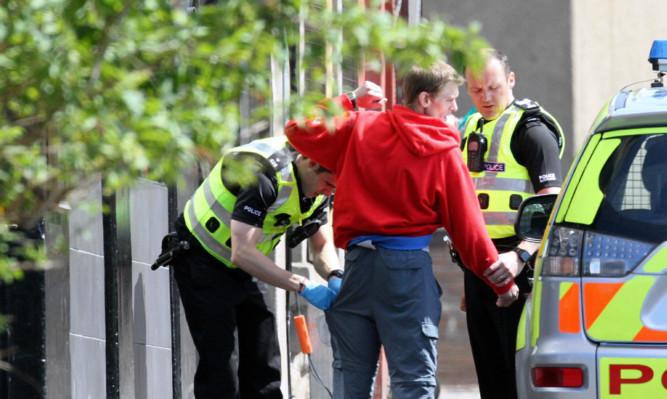Dundonians are being offered £10 shopping vouchers to be quizzed about Police Scotland’s under-fire stop and search policy.
Independent research company Blake Stevenson Ltd is carrying out the study for the force’s watchdog, the Scottish Police Authority (SPA).
Analysis was commissioned after a report by John Scott QC, ordered by First Minister Nicola Sturgeon, recommended further work be done “to assess the effect of stop and search on people’s attitudes towards the police”.
Ms Sturgeon has banned so-called “consensual” stop and searches.
Scottish Liberal Democrat justice spokeswoman Alison McInnes said: “If this research is indeed being carried out on behalf of the Scottish Police Authority it seems a very strange use of taxpayers’ money.
“I’m not sure what information the SPA thinks this kind of self-selecting, paid survey will add to what we already know about Police Scotland’s stop and search practices.
“Further research into the impact of stop and search on different communities and groups is needed. But this is not the route I would have expected the SPA to take.
“This is an incredibly important issue that everyone in Scotland should be able to have their say on, and surveys such as these won’t help give us a clearer picture.”
Anyone over the age of 16 can take part in the qualitative research if they have been frisked, while an advert also calls for “members of the community” and the likes of community leaders, project workers or community workers to come forward.
A report into the findings, which also focuses on areas in Glasgow and Edinburgh, is due in March.
The cost of the shopping vouchers, which can be used anywhere, will be added to the SPA’s bill.
Jennifer Lambert, of Blake Stevenson, said: “We don’t use it (shopping vouchers) for all research, but with groups who are disengaged or harder to reach it can be useful.
“People who have views about the police might be reluctant to speak to us and an incentive can help. We want to try to get a strong sense of the local community. It’s about telling a story.”
An SPA spokeswoman said the research had been commissioned to specifically look at the short and long-term impact of stop and search on different groups and communities.
She added: “The SPA’s 2014 Scrutiny inquiry into stop and search policy and practice by Police Scotland made a number of recommendations to improve the use of this important police tactic in Scotland.
“We are aware that Blake Stevenson, in line with other research companies, are using a standard-practice voucher scheme to encourage participation in the fieldwork.
“This incentive is being administered by Blake Stevenson and is based on previous and current experience of carrying out fieldwork-based research of this nature.”
To take part, call 0131 6672919 or email jessica@blakestevenson.co.uk.
